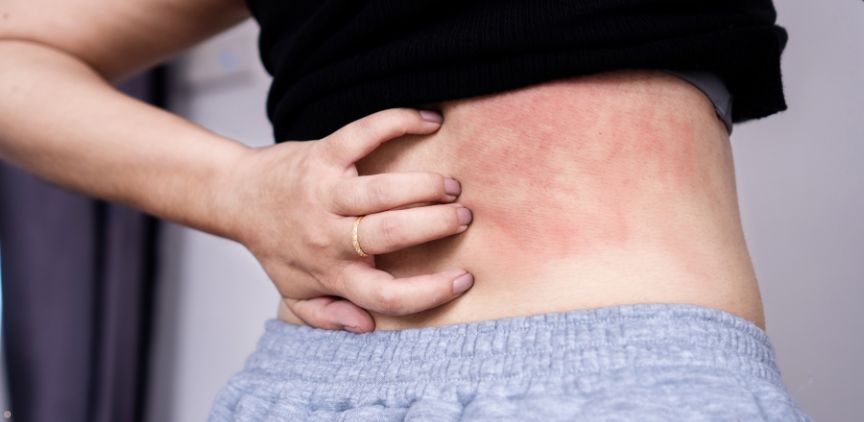What is Prurigo Nodularis?
Prurigo nodularis is a chronic skin condition characterized by intensely itchy nodules that can significantly impact a person’s quality of life. Despite its relatively rare occurrence, prurigo nodularis is a debilitating condition that often requires a multifaceted approach to treatment. In this article, we’ll discuss the various treatment options available and explore the signs and symptoms to help with early diagnosis and management.
Treatment Options for Prurigo Nodularis
Managing prurigo nodularis can be challenging, as the condition often involves both skin and systemic factors. Treatment plans are typically tailored to each individual, based on the severity of their condition, underlying causes and other health factors. Below are the most common treatments currently available:
1. Topical Steroids
Topical corticosteroids are often the first-line treatment for prurigo nodularis. These medications help reduce inflammation and itchiness associated with the condition. High-potency steroids are commonly prescribed, though they should be used under medical supervision to avoid side effects like skin thinning.
2. Calcineurin Inhibitors
For patients who cannot tolerate topical steroids, calcineurin inhibitors like tacrolimus and pimecrolimus may be effective. These non-steroidal creams reduce inflammation and itching, particularly in sensitive areas like the face or groin.
3. Phototherapy
Ultraviolet (UV) light therapy, particularly narrowband UVB therapy, has shown promising results in treating prurigo nodularis. This treatment reduces itching and inflammation while promoting skin healing.
4. Systemic Immunosuppressants
In severe cases, systemic immunosuppressants like methotrexate, cyclosporine or azathioprine may be prescribed. These medications target the immune system to reduce inflammation and prevent flare-ups.
5. Antihistamines
Oral antihistamines are often used to manage the severe itching associated with prurigo nodularis. While they do not treat the underlying cause, they provide symptomatic relief and help prevent scratching, which can worsen the condition.
6. Neurokinin-1 Receptor Antagonists
Drugs such as serlopitant, currently under investigation for prurigo nodularis, are designed to block neurokinin-1 receptors, which are involved in the itch-scratch cycle. Early studies have shown significant reductions in itching with this treatment.
7. Biologic Therapies
Emerging biologic therapies, such as dupilumab (used for other skin conditions like eczema), have shown promise in controlling prurigo nodularis. These medications target specific pathways in the immune system that contribute to the condition.
8. Psychological Interventions
Cognitive behavioral therapy (CBT) and other psychological interventions are often recommended for patients with prurigo nodularis. Chronic scratching can become habitual and psychologically reinforcing, so addressing the mental health aspects of the condition is essential.
9. Lifestyle Modifications
Patients are advised to avoid triggers like harsh soaps, excessive heat and stress, which can exacerbate symptoms. Keeping the skin moisturized with emollients can also help maintain the skin barrier and reduce itching.
Signs and Symptoms of Prurigo Nodularis
Early recognition of prurigo nodularis is crucial for effective management. Prurigo nodularis often begins with intense itching, which leads to scratching and the development of nodules. Here’s what to look for:
1. Itchy, Raised Nodules
The hallmark of prurigo nodularis is the presence of firm, raised nodules that are intensely itchy. These nodules are usually distributed symmetrically on the arms, legs, shoulders and trunk. In some cases, they may also appear on the scalp or buttocks.
2. Thickened, Scaly Skin
Chronic scratching can lead to thickened and scaly skin around the nodules, a condition known as lichenification. This can make the nodules more prominent and difficult to treat.
3. Hyperpigmentation or Hypopigmentation
As the nodules heal or are repeatedly scratched, they may leave behind areas of darker (hyperpigmented) or lighter (hypopigmented) skin. This discoloration is common and can persist even after treatment.
4. Open Sores or Scabs
Excessive scratching often causes the nodules to break open, leading to sores or scabs. This increases the risk of secondary infections, which can complicate the condition.
5. Chronic Itch-Scratch Cycle
The persistent itch associated with prurigo nodularis often leads to an itch-scratch cycle, where scratching temporarily relieves the itch but ultimately worsens the condition by causing further skin damage.
6. Psychological Distress
Patients with prurigo nodularis often experience significant psychological distress, including anxiety and depression, due to the relentless itching and cosmetic impact of the nodules.
7. Resistant to Common Treatments
Unlike ordinary skin conditions, prurigo nodularis often resists over-the-counter treatments like basic moisturizers or mild hydrocortisone creams. This resistance is a strong indicator that medical intervention is necessary.
Diagnosing Prurigo Nodularis
Diagnosing prurigo nodularis can be tricky, as its symptoms overlap with other skin conditions like eczema or psoriasis. A dermatologist will typically conduct a thorough physical examination and take a detailed patient history. In some cases, a skin biopsy may be performed to confirm the diagnosis and rule out other potential causes.
Keep reading to learn about traction alopecia and how to prevent it.
